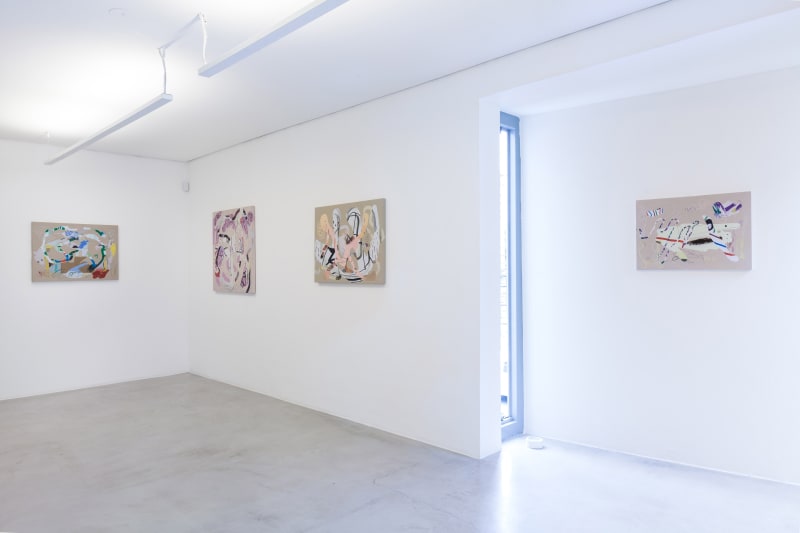I’ll be your mirror
“The goal is not to be concerned with the reconstitution of an anecdotal fact, but with the constitution of a pictorial fact.”1 Georges Braque’s argument (1882-1963), written in the emblematic year of 1917 in Thoughts and Reflections on Art, is kept up to date meeting the freshness of a new work in this language, as Antonio Lee’s.
The pictorial facts regularly produced by the São Paulo artist are settled, in highlight, under the spirt of collage. Such procedure is effective through painting, and not through other media by which it could plunge into, such as assemblage, photography, video, and at the same time, discretely approaches other strategies beyond the brush, palette and paint.
In Velocity vs. Viscosity, the first individual exhibit in São Paulo, Lee, substantially alternates the tonic of his visual discourse. If he previously caught attention through somewhat undone figures, in scenes merging the prosaic with the unusual, in a low tone and little ostensive chromatism, now there is a clear change.
Disposed in chassis of several scales, fragments are spread through apparently less organized configurations, of more intense colors, shapes, volumes, textures and temperatures. The pictorial facts highlighted by the cubist master remain making sense in Lee through the fertile relations created among themselves, in a deepening that we can entitle as pictorial matters.
The blend of techniques and materials – the agile gesture of spray paint, the density and stillness of oil, the black line evoked by the graffiti drawing, the acrylic plasticity, for example– creates panoramas with the accumulation of elements that, although have more space for the accidental and, a priori “scream louder”, truly require much labor in each composition.
At the same time, if we make reference, in the same field (painting?) to names such as Jonathan Lasker and Albert Oehlen, less direct references arises – John Heartfiled’s political photomontage (1891-1968), Godard’s brilliantly assembled audiovisual citations, the loud dissonance of My Bloody Valentine, and, back to Braque, works such as Le Guéridon (1911).
Since what brings together such distinct propositions is a fragmental strategy, which refuses obsolete interpretations, univocal senses, solid approaches. Lee’s plastic seduction certainly has spectacular data. In his paintings, we vividly can see the maximized frenzy of almost everything we can imagine. “(...) We can no longer comprehend the current creative deluge, that floods the globe with images, sounds and words, nor we can deal with it, a deluge that almost certainly will become incontrollable in space and cyberspace”2, warned Hobsbawm.
And it is from the photographic feature, from his notion of index, that the young artist extracts relevant contribution. If in the figurative phase the network’s found photographs were an important axis – that, after the atelier work, gained characteristics very typical of painting - , now Lee, through these patterns and clashes bric-à-brac, seems to collect debris from the world’s beautiful chaos and, grouping, juxtaposing and overlapping, is the author of new states and bodies. An artist as an editor. “The ‘destruction’ – the torso, the shattered body, the body fragment – of a symbol under the ‘sublime violence of truth’: there is a philosophy of trace, of sign, in this essentially 'critical' figure”3, wrote the accurate Didi-Huberman. Thus, through contemporary strategies, Antonio Lee – alongside emerging artists such as Luiza Gottschalk and Diana Motta, considering only São Paulo – daily and skillfully reinvents pictorial facts, subjects, investigations, pictorial shocks and developments. And all of this must be saluted.
Mario Gioia
1. CHIPP, H.B. Teorias da Arte Moderna. São Paulo, Martins Fontes, 1993, p. 265
2. HOBSBAWM, Eric. Tempos Fraturados. São Paulo, Companhia das Letras, 2013, p. 15
3. DIDI-HUBERMAN, Georges. O Que Vemos, O Que Nos Olha. São Paulo, 34, 2010, p. 174

